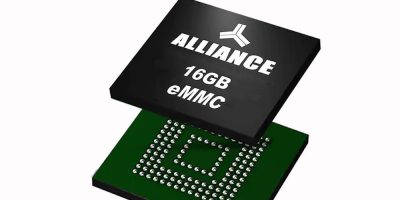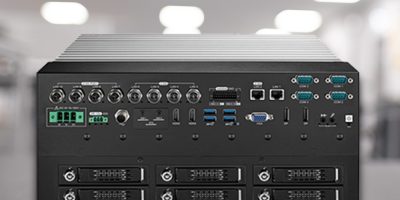Compliant With JEDEC eMMC v5.1, the ASFC16G31M-51BIN integrates NAND flash memory with an eMMC controller and flash transition layer (FTL) management software in a single 11.5 mm by 13 mm 153-ball FBGA package. The 16Gbyte industrial grade device is available from Alliance Memory.
The device for solid-state storage in consumer, industrial, and networking applications features boot operation, replay protected memory block (RPMB), device health report, field firmware updates, power-off notification, enhanced strobe features for faster and more reliable operation, write levelling, high-priority interrupt (HPI), secure trim / erase and high-speed HS200 and HS400 modes. The ASFC16G31M-51BIN is also backwards-compatible with eMMC v4.5 and v5.0.
The eMMC can be used in smart watches, tablets, digital TVs, set-top boxes, VR and AR headsets, digital cameras, CCTV, surveillance, automation, PoS systems and emerging embedded applications. According to Alliance Memory, the ASFC16G31M-51BIN simplifies designs for fast and easy system integration in these products, speeding up product development and time to market. It also saves valuable space by eliminating the need for an external controller. The FTL software provides high reliability and stable performance with wear levelling and bad block management, the company added.
The ASFC16G31M-51BIN operates over an industrial temperature range of -40 to +85 degrees C and offers programmable bus widths of x1, x4, and x8. The device’s NAND memory with internal LDO can be powered with a single 3V supply voltage, while the controller can be powered by 1.8 or 3V dual supply voltages.
Samples of the eMMC are available now. Production quantities are available with lead times of 8 to 10 weeks.
David Bagby, Alliance Memory’s president and CEO confirmed that eMMCs are a new focus product for the company. “We are making a significant investment in this product portfolio, and with further, higher-density additions we’ll be launching in Q3 2023, Alliance Memory is set to become one of the leading providers of eMMC technology,” he predicted.







